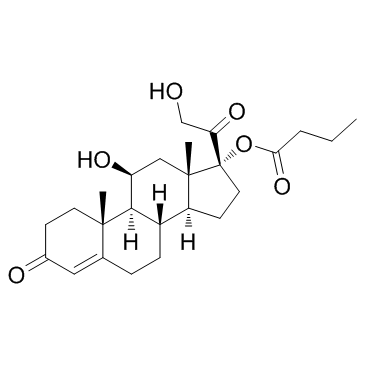Expression of adhesion molecules in atopic dermatitis is reduced by tacrolimus, but not by hydrocortisone butyrate: a randomized immunohistochemical study.
M Caproni, D Torchia, E Antiga, W Volpi, P Fabbri
文献索引:Clin. Exp. Dermatol. 31(6) , 813-7, (2006)
全文:HTML全文
摘要
Topical tacrolimus represents an effective and well-tolerated treatment for atopic dermatitis (AD). Its known effects include reduced production of proinflammatory cytokines and reduced chemokine gradient. We performed lesional skin biopsies on adult patients affected by moderate-to-severe AD. Then, patients were randomized to receive local treatment with tacrolimus ointment 0.1% and hydrocortisone butyrate ointment 1%. On the 21st day of treatment, another skin specimen was taken. Nine patients treated with tacrolimus and seven treated with hydrocortisone successfully concluded the trial. By immunohistochemistry (alkaline phosphatase/antialkaline phosphatase method), we demonstrated that endothelial leucocyte adhesion molecule (ELAM)-1, vascular cell adhesion molecule (VCAM)-1 and intercellular adhesion molecule (ICAM)-1 showed different intensities and patterns of expression in untreated AD lesions. Tacrolimus-treated specimens featured a significant reduction of the expression of ELAM-1, VCAM-1 and ICAM-1, while hydrocortisone-treated lesions did not. Inhibition of adhesion molecule expression may represent another selective mechanism of action of topical tacrolimus in AD.
相关化合物
| 结构式 | 名称/CAS号 | 分子式 | 全部文献 |
|---|---|---|---|
 |
丁酸氢化可的松
CAS:13609-67-1 |
C25H36O6 |
|
Convenient QSAR model for predicting the complexation of str...
2009-01-01 [Bioorg. Med. Chem. 17 , 896-904, (2009)] |
|
Synergistic topical application of salt-processed Phellodend...
2015-11-01 [Mol. Med. Report. 12 , 7657-64, (2015)] |
|
Statistical design for formulation optimization of hydrocort...
2014-06-01 [AAPS PharmSciTech 15(3) , 569-87, (2014)] |
|
[Hydrocortisone 17-butyrate (Locoid), a thirty-year ongoing ...
2006-02-01 [Rev. Med. Liege. 61(2) , 128-30, (2006)] |
|
Corticosteroid solubility and lipid polarity control release...
2010-05-05 [Int. J. Pharm. 390(1) , 53-60, (2010)] |